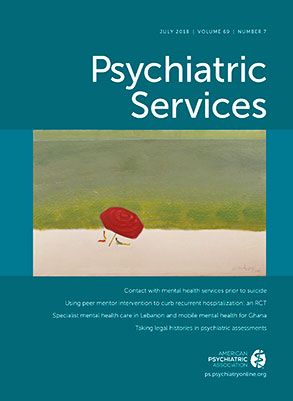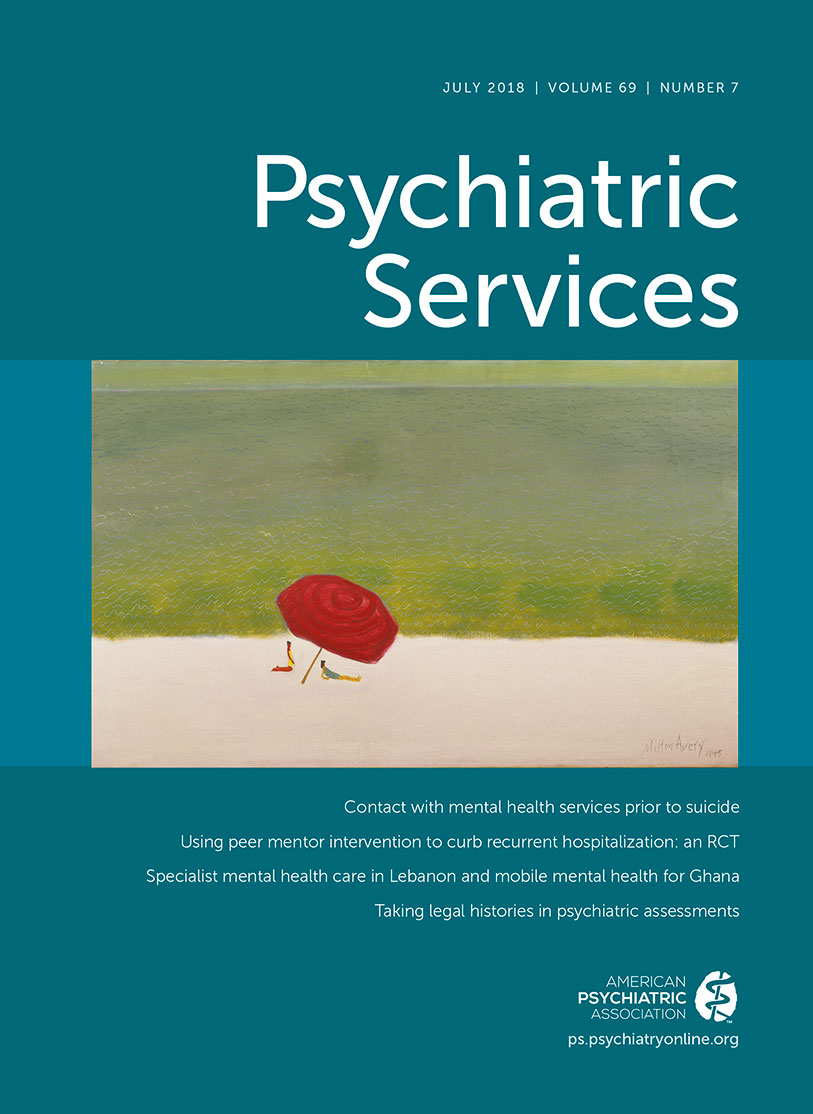TO THE EDITOR: Depression is a major public health concern among young people within the United States, yet 60% of adolescents with depression do not receive the necessary treatment (
1). Increasingly, universal screening for depressive symptoms is being recommended across health care settings (
2). One of the most popular depression screening instruments is the Patient Health Questionnaire (PHQ-9) (
3), a freely available, psychometrically sound measure recommended by the U.S. Preventative Services Task Force for depression screening (
4). The utility of the PHQ-9 has been well established in primary care (
4,
5), but there is a paucity of research detailing the extent to which the PHQ-9 is effective in adolescent psychiatry settings.
Beginning in 2016, the outpatient psychiatry clinic at Boston Children’s Hospital implemented universal depression screening with the PHQ-9, allowing us to preliminarily evaluate the instrument’s feasibility in an adolescent outpatient population and to examine associations with clinical management of depressive symptoms. From September 2016 to March 2017, 325 patients over the age of 12 were administered the PHQ-9 upon their visit to the clinic. Sixty-two percent of patients were male (N=202; some patients did not report) and 63% (N=205; some patients did not report race-ethnicity) were white, with a mean±SD age of 16.03±2.42 years. Session notes for clinic visits wherein the PHQ-9 was administered were reviewed for documentation of psychiatric diagnoses, referrals, safety planning, readministration of the PHQ-9, and emergency assessments for possible hospitalization. The proposed project was approved by the Psychiatry Scientific Review Committee at Boston Children’s Hospital as a quality improvement initiative.
The PHQ-9 was administered efficiently by computer tablet to patients in the waiting room before clinic visits. Most patients required less than four minutes to complete their responses. The PHQ-9’s positive predictive value for depression was 77%—lower than, but comparable to, the 88% found in earlier validation studies in primary care settings (
3). PHQ-9 total scores were significantly correlated with scores on the clinician-rated Children’s Global Assessment Scale, such that higher depressive symptoms were associated with lower functioning (r=–.40, p<.001). High PHQ-9 scores were associated with clinicians’ tendency to readminister the PHQ-9 at a later date (F=5.53, df=1 and 323, p=.019), make a referral for additional services (F=21.93, df=1 and 323, p<.001), and create a safety plan (ns).
Clinicians caring for patients with depressive symptoms have a variety of decisions to make regarding best practice, ranging from symptom monitoring to crisis evaluation. In this sample, scores on the PHQ-9 accurately assessed symptom severity, aligning with patient symptoms and clinician-rated levels of patient functioning. The PHQ-9’s high positive predictive value, as well as its significant associations with clinical decision making, provides preliminary evidence that screening with this instrument may be a feasible way to assess depressive symptoms and thus inform patient care among young psychiatric outpatients. Future research should seek to use longitudinal designs with validated outcome measures to more definitively establish the causal impact of universal screening on patient care.

